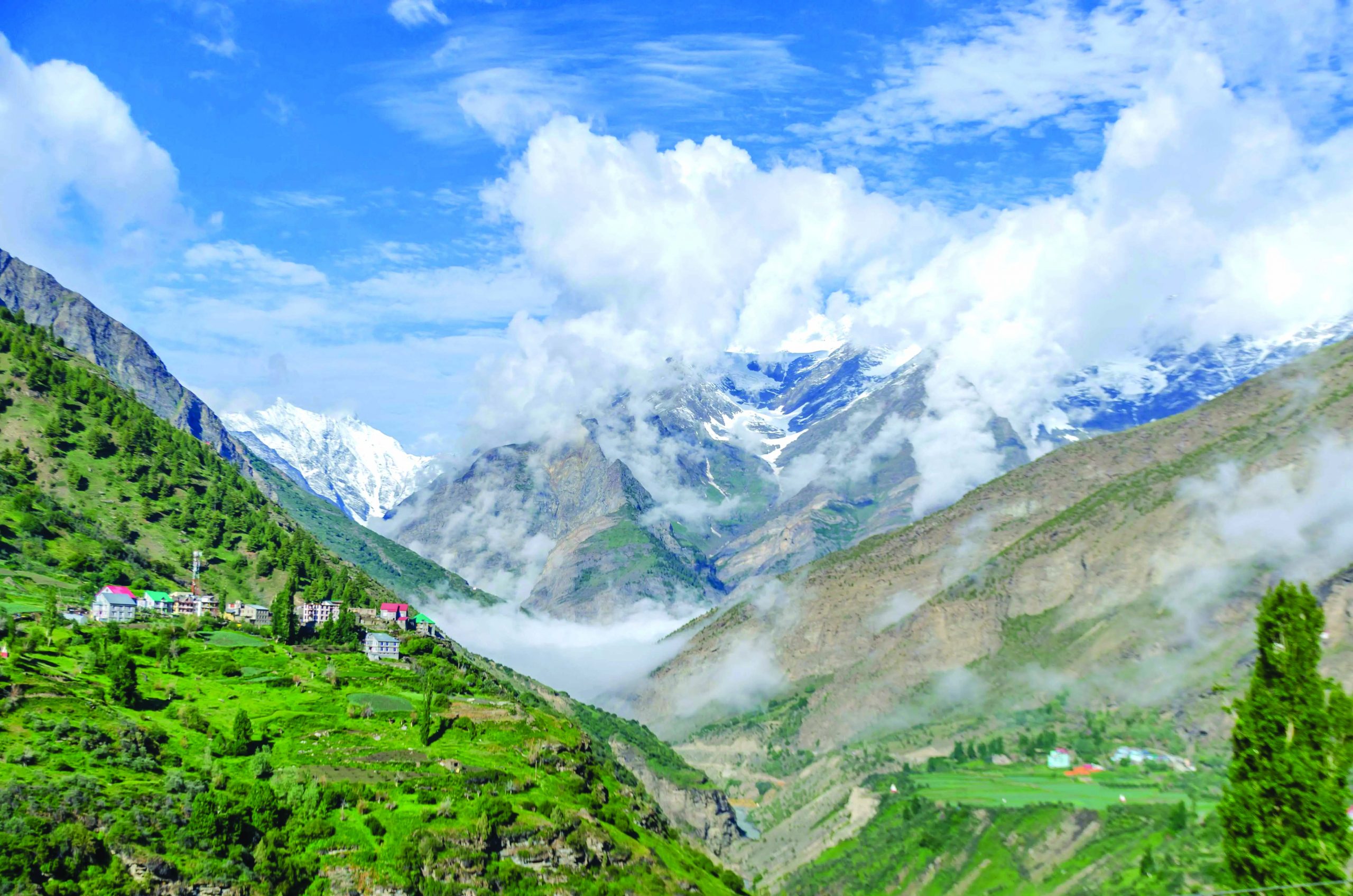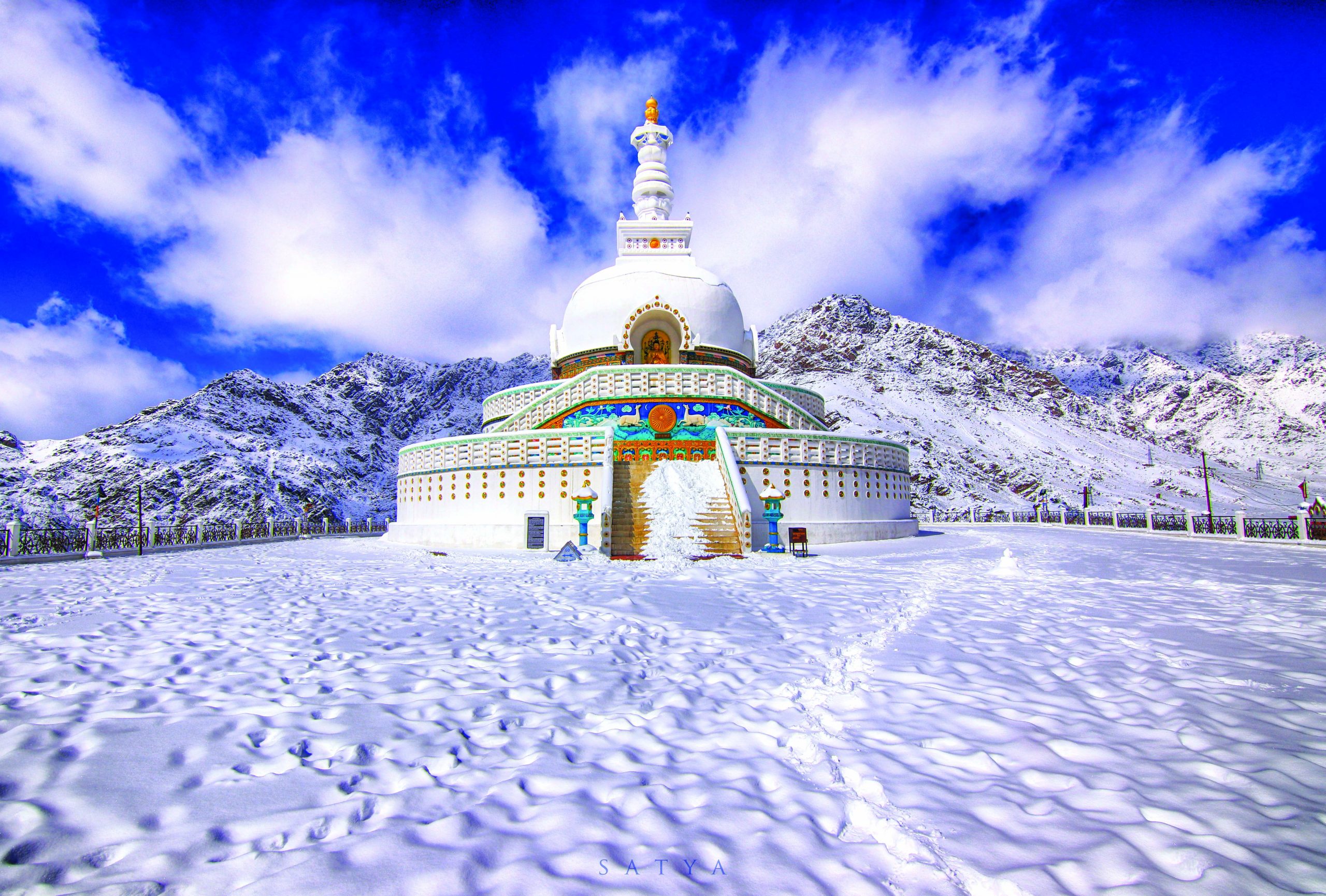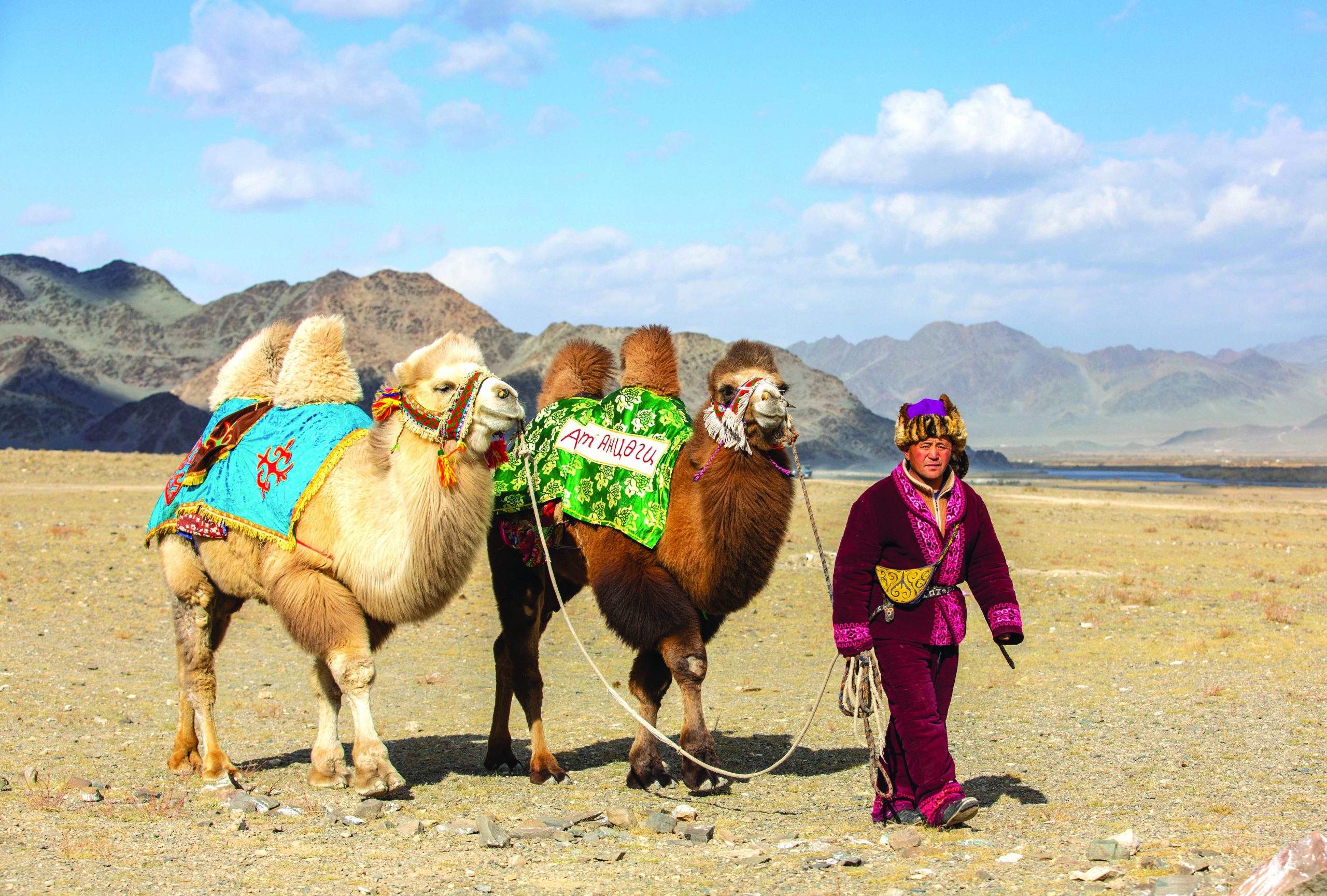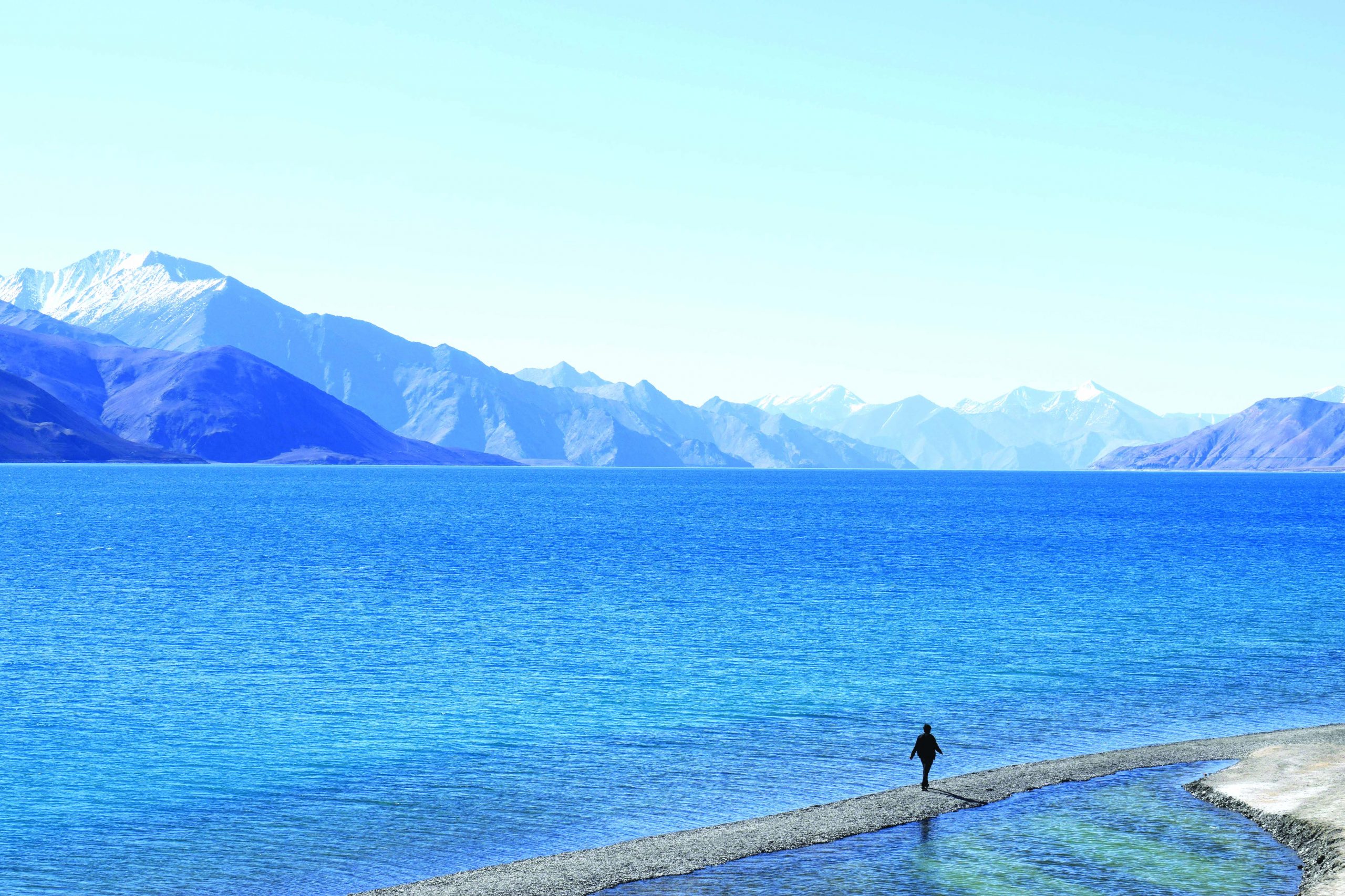With some of the highest motorable roads worldwide, a close-up experience of the Himalayas, high-altitude lakes, and primeval wilderness with miles of solitude, the charms of the Union territory of Ladakh are unique

The Union territory of Ladakh (pop. 1.3 million) administered by a Lieutenant Governor is among India’s most trending tourism hotspots. Once visited only by foreign travellers exploring monasteries and forlorn mountain trails, Ladakh’s stark, barren and unconventional landscape has been impacted upon the popular imagination by several Hollywood and Bollywood blockbuster movies, which have brought this isolated region on the radar of India’s more adventurous middle class travellers.
Ensconced in the Upper Indus Valley of Kashmir, straddling the upper Himalayas and the Karakoram range, Tibetan Buddhists constitute over 50 percent of the population while the Shia Muslims are another majority here. Ladakh translates into “land of high passes”.
Getting there
With Aksai Chin, and Xiangjiang (China) to the north and east, and the Kashmir valley to its west, Ladakh is surrounded on three sides by Pakistan and China and subject to frequent border incursions from armed patrols of these nations. This explains the visible presence of the Indian Army in the district. If despite this geo-political drawback, the region is attracting a rising number of tourists from India and abroad, it’s because the charms of Ladakh are unique and make unconventional demands on tourists. It offers some of the highest altitude motorable roads worldwide, a close-up experience of the Himalayas, high-altitude lakes and a primeval wilderness with miles of solitude. The peak tourist season is mid-May to October. However, quite a few adrenalin-spiked hikers roam Ladakh even beyond October, when harsh winter sets in.
The easiest — even if expensive — access to Ladakh is by air. At 10,692 ft above sea level, Leh’s Kushok Bakula Rimpochee Airport is one of the highest altitude civilian airports worldwide. However, landing at the strip is not assured with powerful and unpredictable mountain winds often disrupting flight schedules. All flights to and from Ladakh operate only during morning hours as winds become stronger and more dangerous post noon. An hour’s flight from Delhi or Srinagar, fares on the Delhi-Leh sector are among the highest and range from Rs.3,000-10,000. Less affluent and more adventurous travellers tend to drive from Manali/Srinagar to Leh, along the world’s most scenic roads.
The two-day, 427 km Manali-Leh road winds its way through five steep passes in the Himalayas — Rohtang (13,060 ft), Baralacha La (16,500 ft), Lachulung La (16,616 ft), Tanglang La (17,460 ft) and Nakee La (15,647 ft). It traverses glacial streams and rivulets which feed major rivers including the Chenab and Beas, and affords spectacular vistas of Himalayan peaks. Overnight halts are at Keylong (3,096 ft) which offers conventional hotels (Rs.300-2,400 per room per night) or Sarchu (4,253 ft) and Pang (4,500 ft) with basic yet adequate tented accommodation (Rs.500 -1,000). Most tourists prefer to halt at Keylong to ease the process of altitude acclimatisation.
Driving up the Manali-Leh road is a test of courage (the narrow width of its two-way traffic road barely accommodates one vehicle), stamina and endurance. Yet, those who undertake this journey will have many survival stories to tell, of close shaves and roadblocks relieved by the mesmerising grandeur of the Himalayas. Taxis ply from Manali to Leh charging Rs.3,000 per head in a shared cab or Rs.17,000-22,000 per SUV. Omnibuses of the Himachal Pradesh Tourism Corporation and private buses also ply this route (Rs.600-800 per head).
The 418-km Srinagar-Leh road is a drive into history — on the major Central Asian trade route along the Indus River used by merchants for over 200 years. It offers breathtaking views of raw landscape as it tunnels through the Zoji La (11,575 ft) and Fotu La (13,478 ft) passes. However, NH 1 is not in as good condition as the Manali-Leh highway.
The route from Manali to Ladakh also snakes through the Atal Tunnel (inaugurated in 2020). This 9.2 km passage running under the Rohtang Pass has officially been certified by World Book of Records, as the ‘World’s Longest Highway Tunnel above 10,000 Feet’.

Acclimatisation
Since Ladakh falls within the rain shadow region of the Himalayas and is sited above the tree line (mostly above 9,900 ft), vegetation is sparse in this ‘cold desert’. The oxygen-deficient atmosphere at that elevation inflicts varying degrees of altitude mountain sickness (AMS) symptomised by headaches, nausea, dizziness, disorientation and fatigue upon most visitors. Failure to acclimatise could prompt HAPE (high altitude pulmonary edema) and/or HACE (high altitude cerebral edema) both of which are serious — and sometimes fatal — afflictions. Tourists are advised to take acclimatisation seriously by avoiding all physical activity, remaining hydrated, and resting for the first 24 hours. Most people get acclimatised within 12-15 hours. In a rare case when symptoms persist, retreating to the plains is the only solution.
Leh
Leh (pop.130,000), the administrative capital of Ladakh district, is replete with monuments, museums and monasteries. The War Museum, Shanti Stupa, Leh Palace and Leh Bazaar, are all within a 10 km radius.
The War Museum, established by the Indian Army, chronicles and showcases the valour and sacrifice of Indian soldiers with pride and poignancy. The Shanti Stupa built by a Japanese Buddhist monk in 1991 and consecrated by the Dalai Lama, contains relics of the Buddha. Sited atop a 13,999 ft mountain, the stupa offers a panoramic view of surroundings. Likewise, Leh Palace, perched precariously against the flat side of the Tsemo Mountain is testimony to the simple life of Ladakh’s royalty. Much of this nine-storey palace is in ruins but the Palace Museum adjoining it, is a treasure trove of ancient tanghka paintings, Ladakhi jewellery and Tibetan handlooms and handicrafts.
Hotels. Top end: Grand Dragon Ladakh (Rs.13,735 per night), The Zen Ladakh (Rs.9,200), Stone Edge Hill (Rs.15,470); Mid-range: Singee Palace Hotel (Rs.5,823), The Auspicious Hotel Ladakh (Rs.3,216), The Nubra Residency (Rs.5,210) Budget: Namra Villa (Rs.2,756), Dolma Guest House Leh (Rs.1,840), Palace View (Rs.1,742).

Monasteries
Once a district of Tibet, Ladakh hosts ancient and revered monasteries which are a great draw. The Hemis Monastery, which hosts the Hemis festival every July, is the oldest and wealthiest in Ladakh. The festival offers a cultural feast of Ladakh’s dance and music, attracting tourists from around the world. The Lamayuru monastery, also one of the oldest, is sited at the end of a roller coaster ride, high up in the mountains and houses 150 resident monks. Along the way is the Moonscape, a stretch of land that resembles the surface of the moon with craters and moon dust!
Thiksey Monastery, known as ‘Mini Potala’ because it’s a replica of the Potala Palace in Lhasa, Tibet which was the main residence of the Dalai Lama until the 14th Dalai Lama fled to India in 1959, houses a 49 ft high Buddha statue, the tallest in Ladakh. At Alchi Monastery, thousand-year-old murals on the walls seem to pulsate while serene monks chant.

Excursions
The road to the Nubra Valley, accessed from Leh through Khardung La pass (a distance of 115 km), is the highest motorable road worldwide. As it climbs from 11,200 ft at Leh to the 18,360 ft Khardung La, the brown mountains with blue, mauve and grey chips of stone give way to glaciers with snow that is deceptively deep. In these surreal surroundings, flora and fauna are scarce. At the top of the pass, drivers remind tourists not to expose themselves to the elements for more than three-four minutes and to refrain from vigorous activity, because at that altitude, mountain sickness (AMS) can strike swiftly and hard, and they could easily walk off a cliff as they lose all sense of direction.
After a mandatory three-minute stop at the Khardung La, vehicles descend to the green Nubra valley where walnut, apricot, almond and apple trees provide a striking contrast to the denuded beauty of upper Ladakh. Here you’ll see the double humped Bactrian camel, a ride on which is highly recommended. The undulating, white sand dunes of Hundar are another attraction of the valley and at Panamik, there are hot sulphur springs with reportedly curative properties.
Hotels. Top-end: Desert Himalaya Resort (Rs.10,304 per night), Organic Village Retreat Hunder (Rs.11,040), Lchang Nang Retreat (Rs.9,313); Mid-range: Hunder Eco Villa (Rs.3,628), The Nurbra Residency (Rs.5,520), Cozy Ethnic Camp (Rs.3,030); Budget: Silk Route Cottage (Rs.2,651), Nubra Boutique Camp (Rs.2,434), Shyok Camp (Rs.2,158).
Lakes of Ladakh
A major attraction of Ladakh is its glacial lakes, of which Tso Moriri (15,075 ft) and Pangong Tso (14,370 ft) are the most visited. The five-hour drive from Leh to Pangong is through the Chang La pass (17,000 ft) on a narrow, ice-laden road twisting through mountains that seem to touch the sky. Yet the testing and often scary drive to Pangong Tso is worth the effort as the water changes colours during the day. This serene and seemingly unending lake which is among the highest altitude lakes in the world is the nesting sanctuary of rare birds such as the Brahminy Duck and the bareheaded goose. It’s also pertinent to note that 60 percent of Pangong Tso’s water body is within Tibet (China) and patrolled by the Chinese Army, with the remaining 40 under Indian jurisdiction. A popular location of Bollywood directors, the excursion to Pangong Tso is best completed in a day as residential accommodation is very basic with hotels unable to provide running hot water.

Brimming over at an even higher altitude of 15,057 ft is the 120 sq. km Tso Moriri which is squarely within Indian territory. Sited 240 km from Leh on the Leh-Manali route, it’s advisable to attempt this excursion only after complete acclimatisation. Since the drive takes six-seven hours (albeit through stunning scenery), the excursion requires two days. Overnight accommodation is available in Korzok village and requires advance booking.
Accommodation is limited. Pangong Eco Lodge (Rs.6,744 per night), Pangong View Point Camp (Rs.4,385), Wilderness Retreat (Rs.3,987), White Heaven Cottage (Rs.2,869).
Other excursions
The Magnetic Hill, 27 km from Leh, is an upward sloping road on which your car will “climb” with the ignition switched off because of magnetic force! Off-the-beaten track sorties are the rugged villages of Dha and Hanu and the Hanle Observatory. The descendants of Alexander the Great who invaded north India in 326 BCE are believed to be living in these villages, 163 km from Leh. Tourists are permitted, with prior permission from the district collector. This is a two-day excursion offering overnight tented accommodation.
At Hanle, 275 km from Leh, the Indian Astronomical Society has constructed the world’s altitudinally highest observatory equipped with the gamma ray telescope, the Himalayan Chandra. Permission from the Indian Institute of Astrophysics, Bangalore, is required for visiting Hanle.
For the shopaholics, there’s a treasure trove of Tibetan and Kashmiri handicrafts and handlooms in the Leh Bazaar. Scarves, singing bowls (a type of bell), Tibetan votive objects, precious and semi-precious stones and jewellery are available aplenty. But watch out for fakes and touts.
NB: Valid ID proofs (passport, driving licence, PAN card, etc) are advised even for Indian nationals.

























